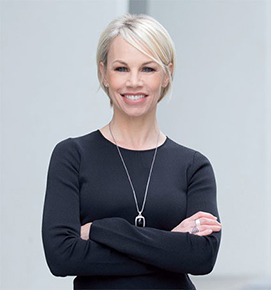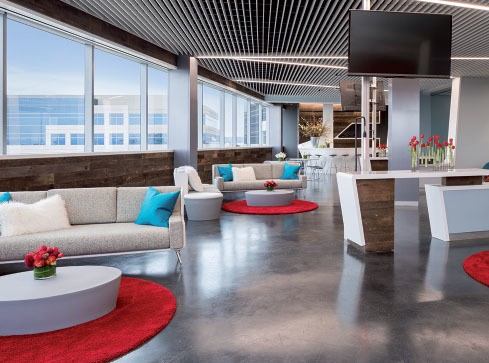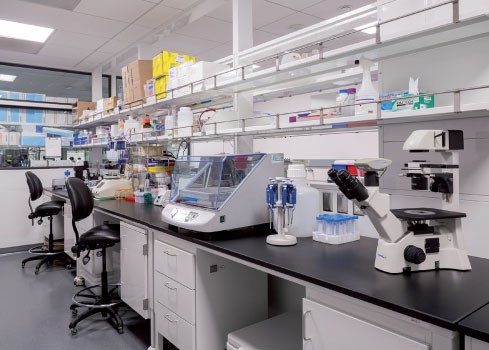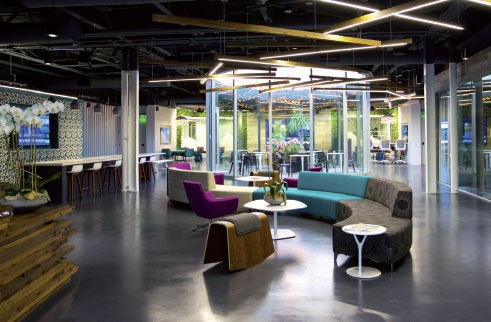JLABS: Fostering the Next Generation of Biotech Entrepreneurs

This article was published in the September/October 2016 edition of Pharmaceutical Engineering® Magazine. JLABS Opens Incubator Space at Texas Medical Center

Melinda Richter believes that the design and production of biopharmaceuticals, medical devices, and consumer health care products require a culture of innovation reminiscent of what is seen in Silicon Valley. (Right: Melinda Richter, Head of Johnson & Johnson Innovation, JLABS) In localized hubs of life science entrepreneurship—places like San Francisco, Boston, and Research Triangle in North Carolina—like-minded visionaries can rub shoulders, living and breathing drug and medical device development in the way their counterparts in software development do. Yet pioneering a new product or service in the health care space takes more than a community of complementary activity; it requires mentoring, huge amounts of capital, and expensive equipment. "Let’s say you have what you think could be a drug," said Richter, who is the head of Johnson & Johnson Innovation, JLABS. "Before you turn the lights on, it takes at least a year to get the money for equipment, to get a specialized operation team in place, and to get permits and licenses. Then it can take eight to 12 more years, and potentially billions of dollars, to bring your product to market. As an entrepreneur, which industry would you rather enter? You’d go into tech, unless someone could help make commercialization in health care just as quick, and just as easy, to get started." JLABS aims to do just that with its model of "incubators," which house start-up companies that need support to get from the conceptual stage of a good idea to development.

JLABS@SSF
"Great technology is just as likely to come from outside the walls of J&J as inside," said Richter. "But outside, those discoveries face many more hurdles before they can become a viable commercial entity. It’s in the industry’s best interest to help remove those hurdles and foster an environment where innovation thrives. And when you do this together with entrepreneurs, you create a community in which there is not only collaboration and cooperation, but also healthy competition."

JLABS@SSF
JLABS opened its fifth life sciences incubator in March at the Texas Medical Center (TMC) in Houston, known as JLABS TMC. While most of the 26 companies accepted into the new facility are involved in the development of biologics, there are also start-ups looking to produce medical devices or consumer health applications. JLABS TMC will eventually house up to 50 start-ups. There are an additional two JLABS in San Francisco, one each in San Diego and Boston, and a sixth in Toronto that just opened in May—the first outside the US. By embedding facilities in localized regions rich in medical research and health care services, JLABS aims to accelerate the translation of ideas and research into commercial entities through education, funding, and networking events. "We want to instill a sense of confidence in entrepreneurs," Richter said. "We want them to know that they can be in locations beyond the San Francisco Bay area or the Boston/Cambridge area and be successful." In addition to facilities and equipment, JLABS provides partners with access to on-site operations teams that allow scientists to focus on research; to business services that support them as they create and run a business; and to partner services, like HR, finance, insurance, and more; to mentors across J&J from different areas of expertise.
Our goal is to catalyze the ecosystem so that it produces a higher volume and better quality of innovators
"This is where the big-company advantage comes in," Richter said. "Most of these entrepreneurs have never gone through development and manufacturing, have never had to think about the commercial side of things or regulatory concerns. We can provide that kind of support for early-stage companies." Richter refers to it as a pay-for-play model that comes with no strings attached to J&J, such as first right of refusal, rights to the IP, or equity. Partners are able to choose whatever configuration of space fits their needs. The model is flexible and can grow with companies as they continue to succeed and grow. "Our goal is to catalyze the ecosystem so that it produces a higher volume and better quality of innovator," she said. "In the end, we hope we get to know each other better; and when it’s right for them, and for us, we hope we’ll do a deal. But that’s not a precondition to be at JLABS." Companies can sign traditional deals with J&J, such as collaborations, licenses, or equity investments, or enter into nonconventional arrangements. Richter gives a hypothetical example of a start-up that doesn’t have enough data to secure additional capital. "We might suggest a contract for three months and $100,000 to conduct an experiment that will tell us what to do next. This can be pivotal for early-stage companies that don’t have the money to do those things and won’t get venture capital without demonstrating that the science and technology are viable." Xycrobe Therapeutics, a partner company at JLABS San Diego that hopes to use the microbiome to treat inflammatory skin conditions, recently inked a deal with J&J Innovation. Together, they will collaborate to obtain a proof of concept of Xycrobe’s platform.
JLABS TMC will eventually house up to 50 startups.
JLABS partners are supported by Johnson & Johnson Innovation science leads for therapeutic areas that include immunology, neuroscience, cardiovascular/metabolics, infectious disease/vaccines, and oncology. There is also a medical device science lead and a consumer science lead. "Our experts take a look at a company to determine if the science and technology are exceptional, and have the potential to become a critical solution," Richter said. "If so, they get accepted into JLABS."
The Attractions of Houston
Half of the 34,000-square-foot JLABS TMC facility is shared lab space filled with state-of-the-art equipment that would typically cost a company $5 to $10 million. The other half is separated into individual labs, private offices, and support services provided by JLABS. A rental space can be as small as a five-foot bench that would give someone access to all the equipment and other services.

Entry and event space at JLABS@TMC
"This is a flexible model that gives start-ups the option to grow," Richter said. "They can start with a minimal investment, get proof of concept, then go and get millions of dollars of additional capital once they have something viable to show investors." Houston caught Richter’s eye for a number of reasons. Topping the list is the TMC—JLABS is located within the TMC Innovation Institute—the innovation hub of the Texas Medical Center, which is the largest medical center in the world, with 56 coordinated member institutions offering research and health care services. All the organizations connected with the TMC share a centralized internal review board, which streamlines applications for clinical trials. She was also attracted to the more than 160 life sciences companies in the city; the $1.8B in academic research investments that occur annually in the city; the presence of Baylor College, which is a leader in genomics and one of three large-scale sequencing centers in the US; and that the governor of Texas recently approved $3 billion in funding for oncology research over the next ten years to such institutions as the MD Anderson Cancer Center. "Put all this together, then add on the top-notch executive team that is taking the TMC to a whole new level," Richter said. "Dr. Robert (Bobby) Robbins, president and CEO of the TMC, came from Stanford and brought that ‘Silicon Valley spirit’ with him to Houston.
We knew that if we brought JLABS there, we could not only make an impact in that region, we could also make an impact for patients around the world." For Richter, JLABS is as much about encouraging the next generation of leaders as it is about supporting today’s biotechnology entrepreneurs. "We want to make these facilities as hip and cool as Apple’s or Google’s," Richter said. "They’re futuristic places designed for today’s eighth grader, so that by the time they graduate they will still want to work here. We want to inspire young people to get into STEM [science, technology, engineering, and mathematics] programs. When you provide a platform that makes it much easier, more of a recipe, and less of an unknown, suddenly creating great solutions that make a difference becomes achievable."
Pharmaceutical Engineering® Magazine: The magazine covers topics important to the global pharmaceutical industry across all sectors, including traditional pharmaceuticals, biotechnology, innovator, and generics. Pharmaceutical Engineering Magazine presents valuable information on the latest scientific and technical developments, regulatory initiatives, and innovative solutions to real-life problems and challenges through practical application articles and case studies. Stay connected with the pharmaceutical industry by becoming a member of ISPE and receive Pharmaceutical Engineering Magazine delivered to your inbox and by mail.


